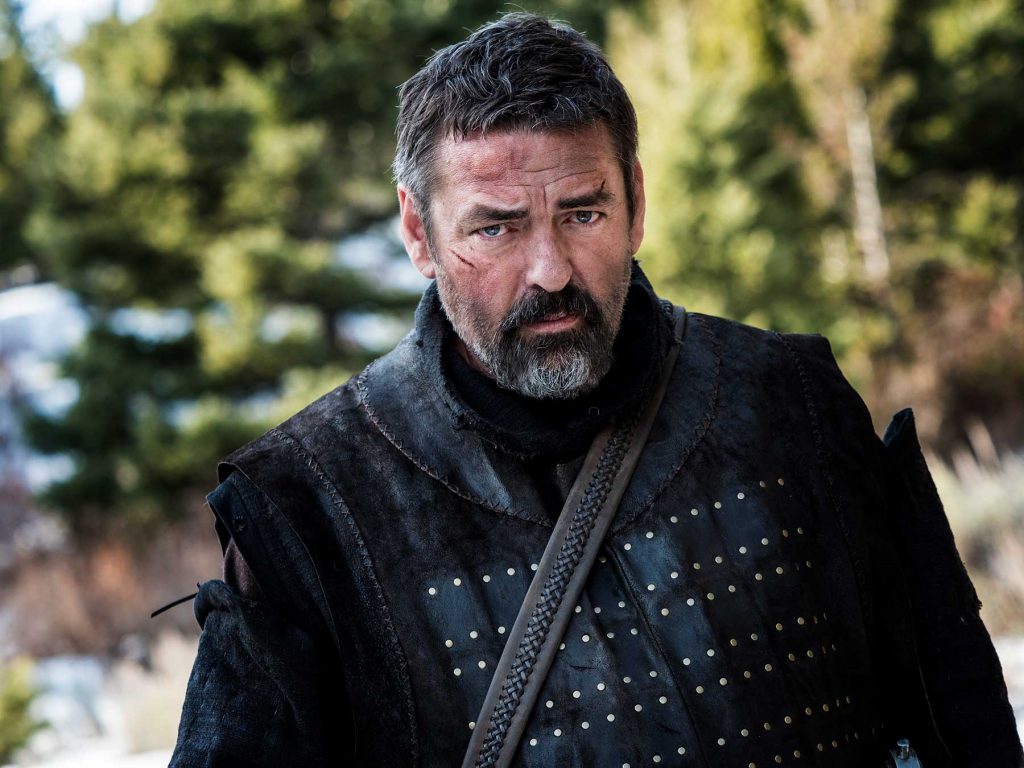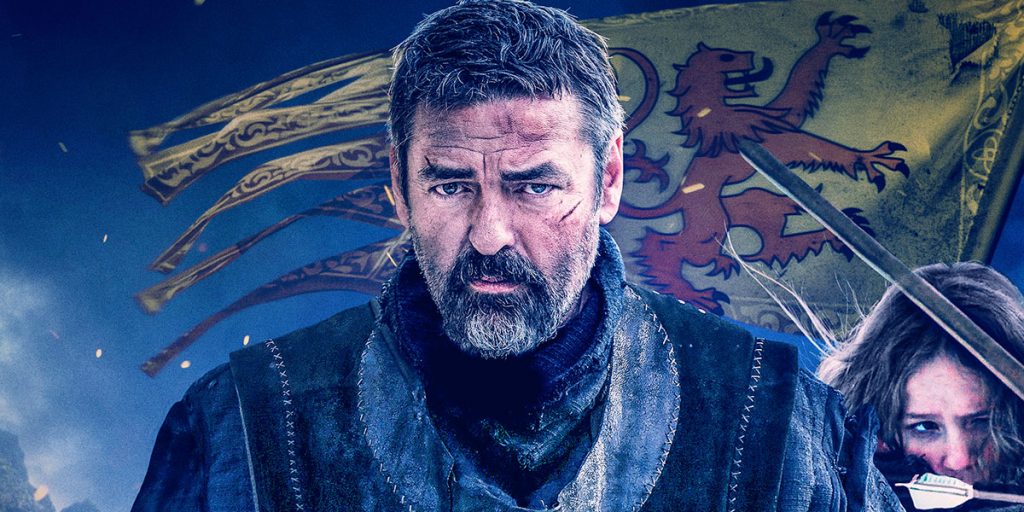Robert the Bruce turns grandiose, mythic Scottish revolution into a fourteenth century take on Home Alone.
While I recognize this is not a popular sentiment in the year 2020, Braveheart is a movie that means a great deal to me. The interplay of classic sword and sandals adventure with brutal modern warfare and a grueling, compelling performance by Mel Gibson made for classic “guy cinema.” I am certainly not the only person of my age to have a Braveheart poster on my college dormitory wall. Over time, of course, Braveheart’s legacy became more complicated. The film’s – let’s be kind and say – loose interpretation of history raised concerns of how certain historical figures were portrayed. Mel Gibson’s reputation has only become more difficult and fraught to consider over the years.
Let us start with that film’s title: Braveheart. Historical records best indicate that was a moniker belonging not to William Wallace, but rather to Robert the Bruce. Robert I, of course, is largely credited with leading the fourteenth century revolution that directly led to Scotland’s independence from England. A viewer only versed in Gibson’s film would reasonably view Robert I as a disloyal, opportunistic, conniving sort. It is, of course, natural that filmmakers would eventually turn to Robert the Bruce as a historical character ripe for reinvention. There is ample room for an historical corrective, or an intimate character study that deals with the complicated machinations of Scottish allegiances.
And so, as is ever so common in film production, two dueling projects got off the ground at approximately the same time. The first to arrive was David Mackenzie’s Outlaw King for Netflix, starring an oddly cast Chris Pine, but bringing with it the feel of epic historical struggle. It is a reasonably effective film, but utterly forgettable. The second to arrive brought with it a legacy. Richard Gray’s Robert the Bruce would bring back Angus Macfadyen (a whole bunch of Saw movies) to the titular role he had made famous in Braveheart. The film made the choice to take on the burden of serving as the spiritual successor and sequel to Gibson’s original.
Assuming you have seen Braveheart, you likely remember that film’s denouement saw Robert take up William Wallace’s sword and lead the Scots into battle. That battle, a historical turning point in the war known as Bannockburn, served the thematic purpose of showing Robert take up the mantle of Scottish independence. It was the emotional payoff of the character’s cinematic arc to see him find his courage in Wallace’s sacrifice.

It is from that context that Robert the Bruce begins, in the most mind-boggling of ways (after some dopey framing devices): the film sees a worn out, weathered, rotund Robert disband his tiny coterie of troops, and attempt to slink off into the winter wilderness to, apparently, quit on the cause of Scottish freedom. It undercuts the character’s arc in Braveheart and does nothing to address concerns that Gibson depicted the character as a weak, unfit leader. It is, quite frankly, baffling.
Soon after, Robert comes to be wounded by a mutinous member of his militia. He takes up hiding with a rural Scottish family. And it is here that the film goes from baffling to nonsensical. Robert needs to get his proverbial smile back in order to get back to the business of leading the Scottish forces. And so we spend the bulk of the film’s runtime enduring a chaste flirtation between our titular king and a beautiful, young widow. The filmmakers, of course, could not possibly have cast an age appropriate actress as Macfadyen’s foil. No, they definitely “needed” to cast a very pretty veteran of Power Rangers TV shows to make doe eyes at the king more than two decades her senior and to be threatened with rape and forced marriage by roving bands of English loyalists.
Those loyalist soldiers are led by a suitably menacing Zach McGowan (Black Sails, Agents of S.H.I.E.L.D.) in the film’s most effective performance. And, of course, the other members of the family must deliver poorly written monologues – frequently in the form of prayers – to inform the audience of all the struggles the family has endured.
Soon, it becomes clear that the film’s plot machinations will require Robert the Bruce to Home Alone this situation and fight off the treacherous ne’er-do-wells when they attempt to invade the widow’s home. This leads to extended sequences of Robert teaching a small child to shoot a bow and arrow, and of flaccid swordplay with the widow’s older nephew. The film’s climax sees (spoilers, I guess) Robert and a few children defeat a hardened combat unit. I found myself feeling bad for the performers.
The combat is bland, slow, and incomprehensibly edited. I needed to rewind to understand that significant character had in fact been killed. Macfadyen’s physical limitations, now in his mid-50s and a good deal heavier than in his Braveheart days, are glaring. I have never viewed Macfadyen as the sort of actor who could carry a character study north of two hours, and nothing here has changed that view. He is evidently responsible for the film’s worst element as well: the screenplay. Robert’s return to faith in the idea of Scotland based on his time with this family simply does not work at all.
I cannot even bring myself to discuss the film’s overtures towards the mystical, but suffice to say they are ineffective. A few recognizable faces like Jared Harris and Patrick Fugit show up in brief thankless roles but can do nothing to elevate the material. John Garrett’s cinematography is easily the film’s high point. Despite largely filming in Montana, Robert the Bruce is often quite beautiful to look and captures an effective feeling of Scotland.
Robert the Bruce fails both as a corrective to Robert I’s record in historical fiction and as a character study.
Robert The Bruce is now available on to watch on Demand everywhere.

